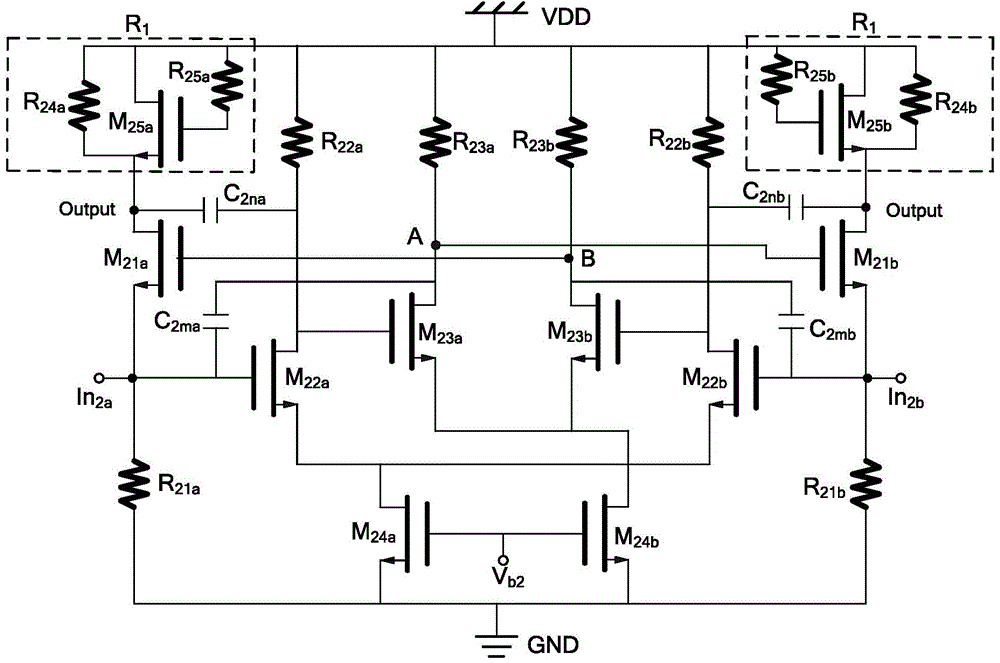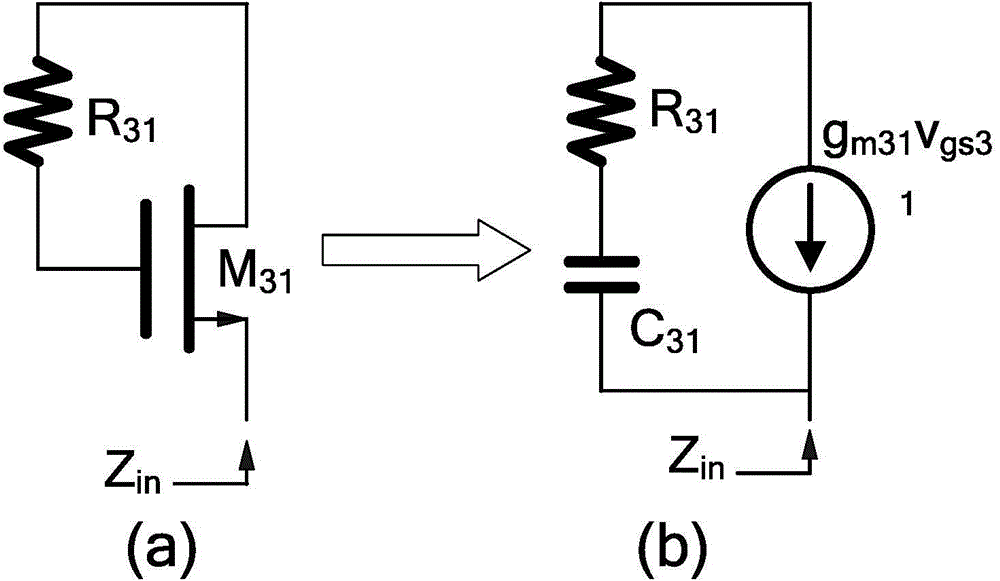High-speed CMOS monolithic integration light receiver front end of cross coupling structure
A cross-coupling and monolithic integration technology, applied in the direction of electromagnetic receivers, can solve problems such as bandwidth and noise compromise, sacrifice circuit noise performance, sacrifice bandwidth, etc., to increase equivalent transconductance, suppress Bandwidth reduction, the effect of reducing input impedance
- Summary
- Abstract
- Description
- Claims
- Application Information
AI Technical Summary
Problems solved by technology
Method used
Image
Examples
Embodiment Construction
[0031] In order to make the purpose, technical solution and advantages of the present invention clearer, the implementation manners of the present invention will be further described in detail below.
[0032] see figure 1 , the high-speed CMOS monolithic integrated optical receiver front-end circuit of the cross-coupling structure that the present invention proposes comprises:
[0033] Two photodetectors with completely symmetrical structures, among them, the first photodetector 1 converts the weak optical signal input by the optical fiber into an electrical pulse signal, and the second photodetector 2 is used to maintain the load balance of the differential input circuit and increase the reception machine bandwidth;
[0034] A transimpedance amplifier 3 of a differential cross-coupling structure, its function is to convert the current signal output by the photodetector (the first photodetector 1 and the second photodetector 2) into a voltage signal, and perform preliminary a...
PUM
 Login to View More
Login to View More Abstract
Description
Claims
Application Information
 Login to View More
Login to View More - R&D
- Intellectual Property
- Life Sciences
- Materials
- Tech Scout
- Unparalleled Data Quality
- Higher Quality Content
- 60% Fewer Hallucinations
Browse by: Latest US Patents, China's latest patents, Technical Efficacy Thesaurus, Application Domain, Technology Topic, Popular Technical Reports.
© 2025 PatSnap. All rights reserved.Legal|Privacy policy|Modern Slavery Act Transparency Statement|Sitemap|About US| Contact US: help@patsnap.com



